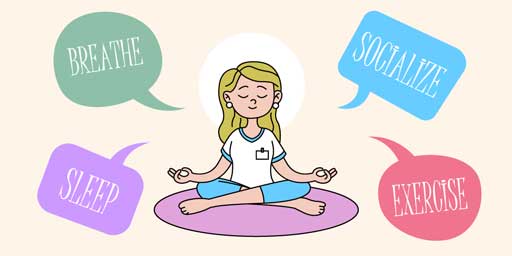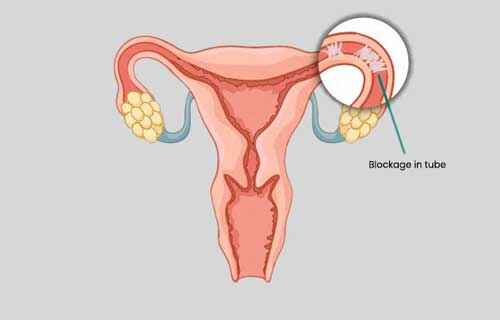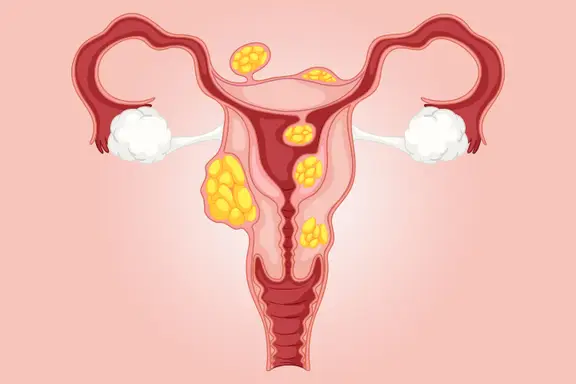Understanding Unexplained Infertility

Definition and Prevalence
Unexplained infertility is a perplexing condition where couples struggle to conceive, even though all standard fertility tests return normal results. This condition affects 10-30% of couples dealing with infertility, making it one of the most challenging and frustrating diagnoses to face. Without a clear cause, couples often experience feelings of confusion, frustration, and helplessness, unsure of how to proceed in their fertility journey. The uncertainty surrounding the condition can lead to emotional distress, as couples search for answers and guidance on the best path forward in their quest to conceive.
Challenges Faced by Individuals
The emotional and psychological toll of unexplained infertility can be deeply overwhelming, leaving couples feeling lost and unsure of how to cope. The absence of a clear diagnosis often leads to intense feelings of helplessness, frustration, and anxiety, as couples struggle to understand why they cannot conceive. This emotional burden can strain relationships, adding another layer of difficulty to an already challenging situation. The ongoing stress not only affects mental well-being but can also exacerbate the condition, creating a vicious cycle that further complicates the path to conception and resolution.

The Role of Lifestyle and Holistic Approaches
Unexplained infertility can often feel like an unsolvable puzzle, leaving couples searching for answers. However, there is hope in holistic approaches, particularly through lifestyle changes that address overall well-being. One powerful approach is yoga, which offers both physical and emotional benefits that are essential in the fertility journey. By incorporating yoga into their daily routine, many couples have discovered not only physical improvements but also significant emotional and mental relief. This holistic practice helps create a balanced environment, providing crucial support for couples as they navigate the challenges of unexplained infertility.
Customized Support for Unexplained Infertility
At the heart of fertility support, Yog4Lyf offers personalized guidance tailored specifically for women facing unexplained infertility. With customized meal plans and yoga routines, Yog4Lyf helps individuals navigate their unique fertility challenges. By subscribing to their course, you can access a holistic program designed to improve your reproductive health and overall well-being, bringing you closer to your fertility goals.
Possible Reasons for Unexplained Fertility
Several factors may contribute to unexplained infertility, including subtle hormonal imbalances, undiagnosed conditions, and lifestyle-related issues. Here’s a closer look at these potential causes:
Hormonal Imbalances

Hormonal imbalances can often go undetected in standard fertility tests, yet they play a significant role in reproductive health. Conditions such as Polycystic Ovary Syndrome (PCOS) or thyroid disorders may disrupt hormonal levels, affecting ovulation and menstrual cycles. Even minor imbalances in hormones like estrogen, progesterone, or luteinizing hormone (LH) can influence fertility. Hormones are crucial in regulating the reproductive system, and their imbalance can lead to unexplained infertility.
Undiagnosed Conditions
Several undiagnosed conditions may silently impact fertility:
Endometriosis

Endometriosis involves tissue similar to the uterine lining growing outside the uterus. This condition can cause pain, inflammation, and scarring, potentially affecting fertility. Endometriosis is often challenging to diagnose and may require specialized imaging or laparoscopy for accurate identification.
Fibroids
Uterine Fibroids are benign tumors that can grow within or on the uterus. They can cause heavy menstrual bleeding, pain, and fertility issues by distorting the uterine cavity or affecting implantation. While fibroids are common, their impact on fertility can sometimes be overlooked.
Blocked Fallopian Tubes
Blocked Fallopian Tubes can prevent the egg from meeting the sperm, leading to infertility. Causes include pelvic inflammatory disease, previous surgeries, or endometriosis. Diagnosing blocked tubes typically requires a hysterosalpingogram (HSG) or laparoscopy.
Thyroid Disorders

Both hypothyroidism and hyperthyroidism can disrupt menstrual cycles and ovulation. Thyroid disorders may not always be detected in routine fertility evaluations, yet they play a significant role in reproductive health.
Lifestyle-Related Issues
Lifestyle factors can significantly impact fertility. Poor diet, high stress levels, and lack of exercise can affect overall reproductive health:
Diet

A diet lacking essential nutrients can impair reproductive function. Nutrient deficiencies, such as low levels of folic acid, iron, or vitamin D, may affect fertility. Eating a balanced diet rich in antioxidants, vitamins, and minerals supports reproductive health.
Stress

Chronic stress can disrupt hormonal balance and menstrual cycles, making conception more challenging. High stress levels are known to impact the hypothalamic-pituitary-adrenal (HPA) axis, which regulates reproductive hormones.
Exercise
Regular physical activity is essential for maintaining a healthy weight and overall well-being. However, excessive exercise or an inactive lifestyle can both negatively impact fertility. A balanced exercise routine supports hormonal balance and reproductive health.
Holistic Approaches
In light of these potential causes, exploring holistic approaches can provide additional support. Yoga, for instance, helps manage stress, improve circulation, and balance hormones. Incorporating practices like mindful breathing and meditation fosters a supportive environment for conception, addressing both physical and emotional aspects of fertility. By addressing these factors comprehensively, individuals can create a more balanced approach to managing unexplained infertility.
The Connection Between Yoga and Fertility
Mind-Body Connection
Yoga nurtures the mind-body connection, a vital aspect of fertility health, helping to align the body with the mind’s intentions. This connection ensures that the body is receptive to the mind’s desires, fostering an environment that supports conception. Through the practice of mindful movement and controlled breathing, yoga helps create internal harmony, which is essential for reproductive health. This holistic approach prepares the body for pregnancy by promoting balance and reducing stress, making it a powerful tool in the fertility journey. Yoga’s gentle practices offer both physical and mental preparation for conception.
Stress Reduction

Stress is a well-known inhibitor of fertility, disrupting hormonal balance and affecting the menstrual cycle, making conception more challenging. Yoga provides a natural remedy by promoting deep relaxation and effectively reducing stress levels, which is crucial for fertility. Practices such as deep breathing and meditation play a key role in activating the parasympathetic nervous system, which helps the body to relax and counteract stress. This activation is essential for restoring hormonal balance, creating a more supportive environment for fertility. Yoga’s calming influence on the mind and body helps prepare individuals for conception naturally.
Improved Circulation and Reproductive Health
Yoga plays a crucial role in enhancing blood flow to the reproductive organs, which is essential for their optimal function and overall reproductive health. Specific yoga poses that focus on the pelvis and hips are particularly effective in encouraging better circulation throughout the reproductive system. This improved circulation ensures that the reproductive organs receive the necessary oxygen and nutrients they need to function properly, supporting fertility. By practicing these targeted poses regularly, individuals can promote a healthier reproductive system, which is vital for increasing the chances of conception and maintaining overall reproductive well-being.
Hormonal Balance
The endocrine system, responsible for hormone production, is directly influenced by specific yoga practices that target hormonal balance. Certain yoga poses and breathing techniques stimulate the endocrine glands, which play a key role in regulating hormones throughout the body. By practicing these targeted techniques, individuals can help regulate their hormonal levels, which is essential for maintaining reproductive health and improving fertility outcomes. Consistent practice of these yoga methods supports the endocrine system, creating a more balanced hormonal environment that enhances the chances of conception and supports overall fertility.
Yoga Practices to Enhance Fertility
Restorative Yoga Poses
Restorative yoga is especially beneficial for individuals experiencing unexplained infertility. This gentle practice focuses on relaxation and rejuvenation, which are crucial for supporting overall reproductive health.
Corpse Pose (Savasana)

How to Do It: Lie flat on your back with your legs extended and slightly apart, allowing your feet to relax outward. Place your arms by your sides, palms facing up, and use props like blankets or bolsters under your knees or back for added comfort. Close your eyes and focus on your breath, letting go of any tension in your body. Ensure your head, neck, and spine are aligned, and allow yourself to fully surrender to the ground.
Benefits: Savasana provides a profound state of relaxation, calming the mind and body. It helps to integrate the benefits of your yoga practice, reducing stress and promoting overall well-being. This pose supports deep rest, which is crucial for balancing the nervous system and fostering a sense of inner peace.
Supported Forward Bend (Paschimottanasana)
How to Do It: Sit on the floor with your legs extended straight in front of you, keeping them together and flexed. Place a bolster or a stack of blankets across your thighs, ensuring it is high enough to support your torso comfortably. Gently fold forward, allowing your chest and head to rest on the bolster, with your arms relaxed at your sides or extended forward. Focus on maintaining a long, straight spine as you relax into the pose.
Benefits: Paschimottanasana deeply stretches the hamstrings, lower back, and spine, relieving tension and promoting flexibility. It calms the nervous system by encouraging deep, slow breathing and relaxation. Additionally, Supported Forward Bend fosters a meditative state, aiding in introspection and mental clarity, making it a beneficial pose for both physical and emotional well-being.

Reclining Bound Angle Pose (Supta Baddha Konasana)
How to Do It: Lie on your back with your legs extended. Bring the soles of your feet together and let your knees fall out to the sides. For added comfort and support, place a bolster or pillows under your knees. Rest your arms by your sides with palms facing up or gently place them on your belly. Allow your shoulders to relax and your body to sink into the floor.
Benefits: Supta Baddha Konasana effectively opens the groin and pelvic area, which can help relieve tension and increase flexibility. It encourages deep, rhythmic breathing, which promotes relaxation and reduces stress. Additionally, Reclining Bound Angle Pose soothes the mind, fostering a sense of calm and introspection. It’s particularly beneficial for easing the body into a state of rest and mental clarity.

Supported Legs-Up-the-Wall Pose (Viparita Karani)
How to Do It: Sit close to a wall, then lie on your back and swing your legs up the wall, keeping them straight. Place a folded blanket or bolster under your hips to support your pelvis and elevate your legs more comfortably. Allow your arms to rest relaxed by your sides or gently place them on your belly. Close your eyes and focus on your breath as you settle into the pose.
Benefits: This pose encourages venous return, which helps blood flow back to the heart and can alleviate pressure in the lower body. It reduces stress and calms the nervous system by promoting deep relaxation. Additionally, Supported Legs-Up-the-Wall Pose supports pelvic relaxation, which can be beneficial for overall reproductive health and helps in relieving tension from the lower back and legs.

Supported Bridge Pose (Setu Bandhasana)
How to Do It: Lie on your back with your knees bent and feet hip-width apart, ensuring your feet are flat on the floor. Gently lift your hips towards the ceiling and place a block or bolster under your sacrum for support, letting the weight rest on the prop. Allow your arms to rest by your sides, palms facing up, and relax your shoulders away from your ears. Breathe deeply and hold the pose for several minutes, focusing on releasing tension.
Benefits: Supported Bridge Pose opens the hips and stretches the chest, which can help release tension and improve flexibility in the lower body. It promotes relaxation and supports the nervous system, contributing to a sense of calm. Additionally, it helps balance the pelvic area by providing gentle support to the lower back and sacrum, which can be beneficial for maintaining overall pelvic health and alignment.

Supported Child’s Pose (Balasana)
How to Do It: Begin by kneeling on your mat with your big toes touching and knees spread apart. Sit back on your heels and fold forward, resting your forehead on the ground or a bolster. For added support and comfort, place a bolster or folded blanket under your chest. Extend your arms in front of you or keep them by your sides, whichever feels most relaxing.
Benefits: Supported Child’s Pose effectively releases tension in the back and hips, helping to alleviate stiffness and promote flexibility. It calms the nervous system by encouraging deep, steady breathing, which fosters a sense of tranquility. This pose also promotes deep relaxation and introspection, making it an excellent choice for reducing stress and creating a peaceful state of mind.

Pranayama for Fertility
Breathing techniques like Nadi Shodhana (Alternate Nostril Breathing) are essential for calming the mind and balancing the nervous system. Pranayama practices promote relaxation, reduce stress, and support the body’s natural fertility rhythms.

Nadi Shodhana (Alternate Nostril Breathing)
Breathing techniques such as Nadi Shodhana, or Alternate Nostril Breathing, are crucial for calming the mind and balancing the nervous system. This practice helps synchronize the left and right hemispheres of the brain, promoting a state of inner peace and mental clarity.By focusing on controlled breathing, these techniques help activate the parasympathetic nervous system, which supports the body’s natural fertility rhythms.
Meditation and Mindfulness
Incorporating meditation into your daily routine can greatly enhance your fertility journey. Meditation fosters a profound sense of peace and acceptance, which is crucial during infertility. Practices such as guided meditation and mindfulness help shift your focus from stress and anxiety to hope and positivity. By redirecting your attention to a more optimistic and calm state, these practices create a supportive environment for conception. This mental shift is essential for overcoming the emotional challenges of infertility and preparing both mind and body for pregnancy. Embracing meditation can be a powerful tool in creating a fertile ground for achieving your fertility goals.
Creating a Yoga Routine for Fertility
To maximize the benefits of yoga, creating a personalized routine that aligns with your menstrual cycle is crucial. During menstruation, gentle practices help provide comfort and support, easing menstrual symptoms. In the follicular phase, incorporating more dynamic poses can energize the body and prepare it for the upcoming ovulation. As you move into the ovulatory phase, focusing on poses that enhance circulation and support reproductive health is beneficial. By tailoring your yoga practice to your cycle, you can support overall well-being and enhance fertility, creating a balanced approach that aligns with your body’s natural rhythms.
Integrating Yoga with Medical Treatment
Complementary Approach
Yoga can effectively complement medical treatments for unexplained infertility, enhancing their overall effectiveness. By incorporating yoga into your routine, you can reduce stress, which is crucial for improving fertility. Additionally, yoga improves circulation and helps balance hormones, supporting the body’s natural ability to conceive. This holistic approach works synergistically with medical interventions, providing comprehensive support. Through its calming and restorative effects, yoga not only enhances physical health but also creates a more favorable environment for conception, making it a valuable addition to any fertility treatment plan.
Communicating with Healthcare Providers
When integrating yoga into your fertility treatment plan, it’s essential to communicate with your healthcare providers. Discussing your yoga practice with your doctor helps ensure that it is safe and aligns with your overall treatment goals. Your healthcare provider can offer guidance on how to incorporate yoga effectively without interfering with your medical treatments. By working together, you can create a comprehensive plan that supports both your physical and emotional well-being, enhancing the chances of successful fertility treatment. Open communication ensures that all aspects of your approach are harmonized for the best possible outcomes.
Mindful Movement During IVF
For individuals undergoing assisted reproductive technologies (ART) like IVF, mindful yoga practices offer significant benefits. Gentle movements and restorative poses play a key role in reducing stress, which is crucial during this intense process. By incorporating yoga into your routine, you can maintain a positive mindset and support your body through the physical and emotional demands of ART. Yoga helps create a calming environment, alleviating anxiety and promoting relaxation, which can enhance the overall effectiveness of ART treatments. This supportive practice complements medical procedures, providing holistic care during your fertility journey.
Additional Resources and Support
Recommended Yoga Programs
Consider enrolling in fertility-focused yoga programs such as Yog4Lyf, which provides extensive support for individuals dealing with unexplained infertility. These specialized programs are designed to enhance reproductive health through targeted yoga practices and tailored lifestyle guidance. By participating in such programs, you can benefit from a holistic approach that addresses both physical and emotional aspects of fertility. Yog4Lyf’s classes are crafted to support your unique needs, offering a combination of yoga techniques and personalized recommendations that can complement your fertility treatments and overall wellness journey.
Books and Online Resources
To further support your fertility journey, explore books, websites, and online communities dedicated to using yoga to enhance fertility. These resources provide valuable insights, practical tips, and encouragement from both experts and individuals who have successfully navigated similar challenges. Engaging with these materials can offer additional support, deepen your understanding of how yoga can improve reproductive health, and connect you with a community of like-minded individuals. By accessing these resources, you gain valuable knowledge and motivation, helping you integrate yoga effectively into your fertility plan and stay positive throughout your journey.
Consulting a Specialist
For personalized guidance, consulting with a fertility specialist or a certified yoga therapist is highly recommended. These professionals can create a tailored plan that addresses your unique needs, ensuring you receive the most effective support. A fertility specialist can offer medical insights and treatment options, while a yoga therapist can provide customized yoga practices that complement your fertility goals. Working with both experts helps ensure a comprehensive approach, aligning your medical treatments and holistic practices for optimal results. This personalized support maximizes your chances of success and enhances your overall fertility journey.
Embracing Yoga as a Path to Fertility
Empowerment Through Yoga
Yoga empowers individuals to take charge of their fertility journey through a holistic approach that nurtures both body and mind. By embracing yoga, you can cultivate a deep sense of control, inner peace, and positivity, which are crucial for overcoming the challenges of unexplained infertility. This practice helps create a balanced environment, addressing physical, emotional, and mental aspects of fertility. The benefits of yoga support your overall well-being, making it a powerful tool for navigating the complexities of infertility and fostering a hopeful and proactive mindset throughout your journey.
Hope and Positivity
As you embark on your fertility journey, remember that hope and positivity are your greatest allies. Integrating yoga and holistic practices into your life supports not only your fertility but also your overall well-being. Embrace this path with an open heart, knowing that each step, no matter how small, brings you closer to your goal. By fostering a positive mindset and incorporating these practices, you enhance your physical, emotional, and mental health, creating a nurturing environment for achieving your fertility goals. Each step forward is a move towards a healthier, more balanced you.


